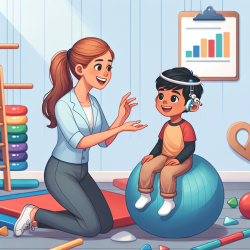Children with sensorineural hearing loss (SNHL) face unique challenges, particularly in postural control, due to vestibular system hypoactivity. A recent study published in the Brazilian Journal of Otorhinolaryngology sheds light on these issues and offers valuable insights for practitioners. Here, we delve into the study's findings and discuss practical steps to enhance outcomes for children with SNHL.
Understanding the Research
The study, "Postural control assessment in students with normal hearing and sensorineural hearing loss," evaluated 96 students aged 7 to 18 years. It compared postural control between 48 students with normal hearing and 48 with SNHL using the Balance Error Scoring System (BESS) scale. The results were compelling: students with SNHL exhibited significantly greater instability in postural control on both stable and unstable surfaces (p < 0.001).
Key Findings
The study revealed several critical points:
- Students with SNHL showed greater instability in postural control compared to their peers with normal hearing.
- Instability was observed across all age groups and both genders.
- Severity of hearing loss correlated with greater postural instability.
Implications for Practitioners
These findings underscore the importance of targeted interventions for children with SNHL. Here are some practical steps practitioners can take:
- Early Assessment: Conduct early and regular assessments of postural control in children with SNHL to identify issues promptly.
- Integrate Vestibular Therapy: Incorporate vestibular rehabilitation exercises into therapy plans to improve balance and coordination.
- Collaborative Approach: Work closely with physical therapists, occupational therapists, and educators to create comprehensive, multidisciplinary intervention plans.
- Family Education: Educate families about the importance of vestibular health and provide them with exercises to practice at home.
Encouraging Further Research
While this study provides valuable insights, it also highlights the need for further research. Practitioners are encouraged to explore additional studies and contribute to the growing body of knowledge on postural control in children with SNHL. Collaborative research efforts can lead to more effective interventions and better outcomes.
Conclusion
Children with SNHL face significant challenges in postural control, but with early intervention and targeted therapy, we can help them achieve better stability and coordination. By staying informed and applying research-driven strategies, practitioners can make a meaningful difference in the lives of these children.
To read the original research paper, please follow this link: Postural control assessment in students with normal hearing and sensorineural hearing loss.










